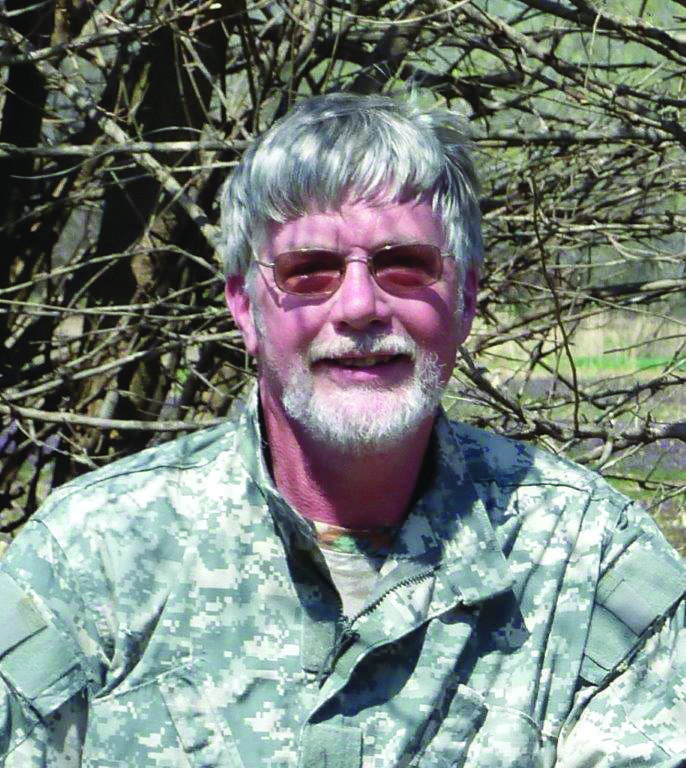This week, I received via Facebook Messenger, a recipe for Carp Cakes, fish cakes made from carp meat. I messaged fellow outdoor writer and host of the weekly radio program “What’s in Outdoors” Phil Taunton, to ask if he had ever eaten carp. Phil phoned me, and during our conversation, I was reminded of the story about the year Inman Lake first went dry.
Prior to 1900, more than 9000 surface acres of marshes existed in west central McPherson County. It’s said that ducks were so plentiful in those marshes that duck hunters would literally fill wagons with harvested ducks and haul them with teams of horses several miles north to the tiny town of Conway where they would be put on trains to be sold to restaurants in Kansas City. Around the turn of the century, the Blaze Fork drainage ditch was built to drain much of this marsh area, leaving behind the McPherson valley Wetlands and the largest NATURAL Lake in Kansas, Inman Lake.
During the late 1950’s, Inman Lake went dry for the first time ever, and after a coworker convinced me what a great story that would make if I could still find some witnesses from that era, I began knocking on doors. My first stop was at the home of Paul and Elverna Reimer, just southeast of the lake. Paul remembered that the Navy actually using the lake for some sort of maneuvers during World War II. He says you could hear boats and commotion at the lake, but the roads were all closed and guarded so none one ever really knew what was going on. He also remembers that while swimming there in the 20’s and 30’s, cold spots would be found throughout the lake, leading most to believe that Inman Lake was somehow spring fed. After the lake first dried up, the county decided those phantom springs must be plugged with mud and decided it was worth a shot to try to blast them open. (This was one of a couple stories everyone I spoke with agreed upon.) Norman Schmidt, who was just a young boy at the time and lived right along the lake, remembers barrels full of explosives being buried in the mud around the middle of the lake. He says a huge plume of mud shot skyward with each detonation, only to fall straight back down to the lakebed again, sealing the holes opened by the blast. As far as anyone remembers, no springs were every found, and the lake stayed dry. This was also possibly around the time Inman’s famous mythical swamp creature, Sink Hole Sam first appeared, perhaps shaken from his bed by all the fuss.
Although not a fishing hotspot in recent times, Inman Lake once held a decent population of both channel and flathead catfish, plus lots of carp and other rough fish. Naturally as the lake slowly dried up, all fish were forced to the remaining water. The bottom of the lake is black, oozy, sticky mire that remains nearly unnavigable for days and possibly weeks, even after being fully exposed to the sun, meaning any fish in that last pool of water would be all but lost. Norman Schmidt remembers helping his dad and several other guys harvest many of those remaining fish, mostly carp and rough fish, when the lake dried up the first time. They collected enough big wooden planks to make a plank sidewalk across the oozy mire by placing planks in front of them and slowly working their way to the remaining pool of water that teemed with fish. Norman says one poor fellow fell off the planks into the muck and became nearly hysterical before being rescued. Two flat bottom boats were also pulled along with them, and once they reached the middle, just enough water was poured into each boat to keep fish alive. “Gunny sacks” were filled with fish caught from the puddle and dumped into the boats, then the loaded boats were arduously dragged back toward the lakes edge and the plank sidewalk collected on the way. Norman remembers 75 or so people showing up to get some of the free rescued fish.
The other story remembered by everyone, was how the lake was farmed the year it first went dry. It seems at that time the lake was owned by four neighboring farmers. As I understand it, after it went dry, all four farmers fenced their portion of the dry lake bed and planted Milo. Memories vary as to whether a crop was harvested, but all agreed that several inches of rain in a short period filled the lake again just as the milo crop was ready to cut. The water was deep enough that only the milo heads protruded above the surface, and the ducks flocked to the lake in droves for the smorgasbord that could be had by merely floating along.
Listening to my elders who remembered Inman Lake in its heyday when boat races were run there and skiers enjoyed its waters, brought back many memories for them and many other stories; like the possibility the lake had gone dry one other time, and descriptions of the homemade chicken-wire contraptions used by fishermen to catch forty or fifty carp at a time from huge schools of carp that were common there (it seems lots of carp were eaten back then.) Even though Inman Lake is in no danger of going dry anytime soon, its like a friend recently told me; “Here in Kansas, we’re only ever about 30 days away from a drought.” By the way, check out Phil Taunton’s weekly radio show, “What’s in Outdoors” each Friday morning at 8:20 on 1400 AM….Continue to Explore Kansas Outdoors.
Steve can be contacted by email at stevegilliland@idkcom.ne





